A bleaching green is an open outdoor space, upon which cloth was spread to dry and by whitened by sunlight. They were especially common in areas where textiles were produced. Linen weaving became the major industry in rural Scotland from the 1750s and in the Largo villages, linen hand loom weaving became a common occupation. The above image shows the bleaching green at the Temple (now a car park). The image shows a small amount of cloth spread out to dry in the corner of the green. The Old Statistical Account (1792) for Largo Parish describes weaving as "the principal manufacture" with "linen and checks" being most common. According to the book "Flax and Linen in Fife through the Centuries' by P.K. Livingstone, linen was "a fabric of plain weave, made from the stem fibres of flax" and check was "a pattern of cross lines forming small squares, as in a chess board". Some flax was grown locally but most was imported.
Note that the above states that "almost every weaver, and a good number of others, have their bleaching ground, where they prepare linen". Hand looms weavers worked at home, in a room or outbuilding containing a large loom. Some may have used their own outside space for bleaching but others made use of communal bleaching greens. These common greens were leased to the feuars of surrounding properties under long-term arrangements. The linen manufacturing process involved many stages and was not complete until the cloth had spent time outdoors to bleach.
According to the 1932 'Largo Village Book', "up to 1850 there was a loom in every house in Lower Largo, Drummochy and Lundin, and much linen was made." In fact weaving was not limited to those places but also took place in Kirkton of Largo, along at the Temple and of course at Emsdorf. It may even be that the village of Emsdorf was feued from 1802 with weaving in mind. The majority of houses built there had deliberately low ceilings so that loom heads could be fixed to them yet could be easily reached by the weaver. 'Linen HLW' was by far the predominant occupation in Lundinmill (particularly around Emsdorf) in the 1841 census (see example page below).
Some of the known communal bleaching greens around the Parish are shown on the map below. These are:
1. Pump Green in Emsdorf
2. Green to the West of Drum Lodge (close to Joiner's Workshop)
3. Temple Green
4. The foot of the Serpentine (known as Tam's Den)
5. The Grove - Upper Largo
All of those of close to a water source - either a burn or a well or water pump, as the linen was sprinkled with water during the bleaching process.
Woven linen was naturally a tan colour, so bleaching was essential. The linens were laid out on grass for several days. The cloth became whiter by the day until reaching an optimum level of whiteness. It was a slow process but one that was effective and did not result in any weakening of the fabric. However, having the product of your labours lying outdoors came with some risks. High winds, wandering animals and thieving hands could all be a problem.
The newspaper archives are full of reports of thefts from bleaching greens. A couple of examples are shown below. The story from Crail is from the 2 September 1824 Fife Herald and tells of the theft of a "web of cloth" (the web is the result of weaving the weft threads over warp threads) from the village bleaching green, the two women involved being "drummed through the town" as a punishment. The same newspaper on 20 October 1831 cautions readers in Cupar of a series of thefts from bleaching greens there. In 1839, two men were jailed for 40 days for stealing clothes from a bleaching green in St Monance.
The 'Largo Village Book' tells of how owners of the bleaching linen at Tam's Den near the Serpentine in Largo used to "sit on the banks all night in summer to see that no one stole the cloth". No doubt this type of supervision of the wares was a fairly common practice.
The bleaching green in Emsdorf was known then as 'Pump Green', owing to the water pump sited there. The green covered a much larger area than the remnant left today would suggest. As Esther Menzies wrote in her 1974 memoires, the green there was...
"surrounded by a high stone wall following the line of the posts and chain there at present but protruding in an arc for several yards at the south end. There was a gap of about four yards with an iron pump with a turning knob....The washing was laid out to bleach in the curved end and we did not play on the green if the washing was there. At other times it was a playground. The grass patch beyond was near oblong. It was crossed by paths - one leading round by the curved wall to Emsdorf Place Houses, another at the east edge in front of their doors and another from Woodlands Road cutting through to meet the one passing alongside the Pump Green wall and leading up to the HIllhead."
One of the Emsdorf Place houses was for many decades named 'Green House' owing to its position adjacent to the green but the name was lost as the former use of the space faded from collective memories. Handloom weaving also vanished from the villages as power loom factories took over the manufacture of textiles. The bleaching of clothes became an indoor process thanks to the development of bleaching powders. However, traces of former bleaching greens and surviving weavers cottages still contribute to the character of the villages in Largo and many other towns and villages. Below is an evocative photograph of a green in Pittenweem being well-used in days gone-by. If you know of other bleaching greens around Largo Parish, please leave a comment.
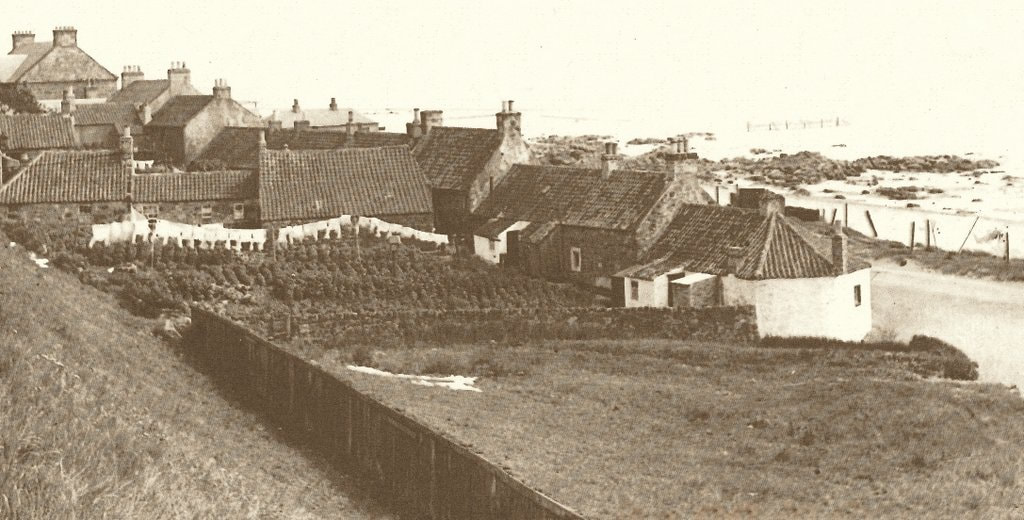
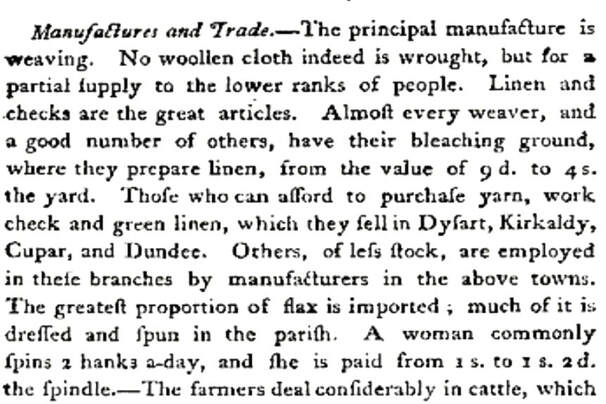


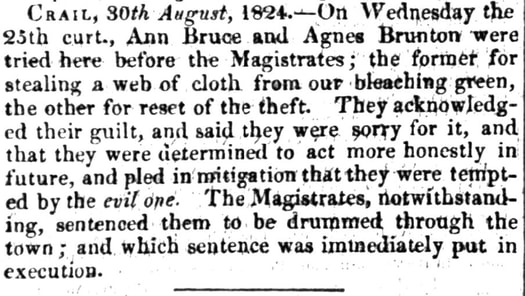
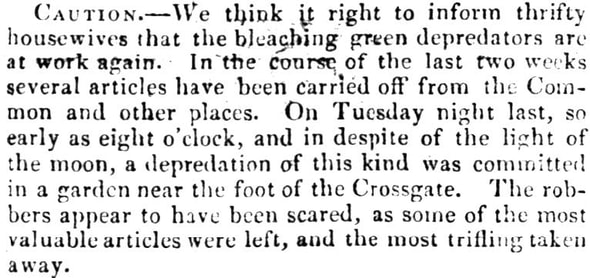
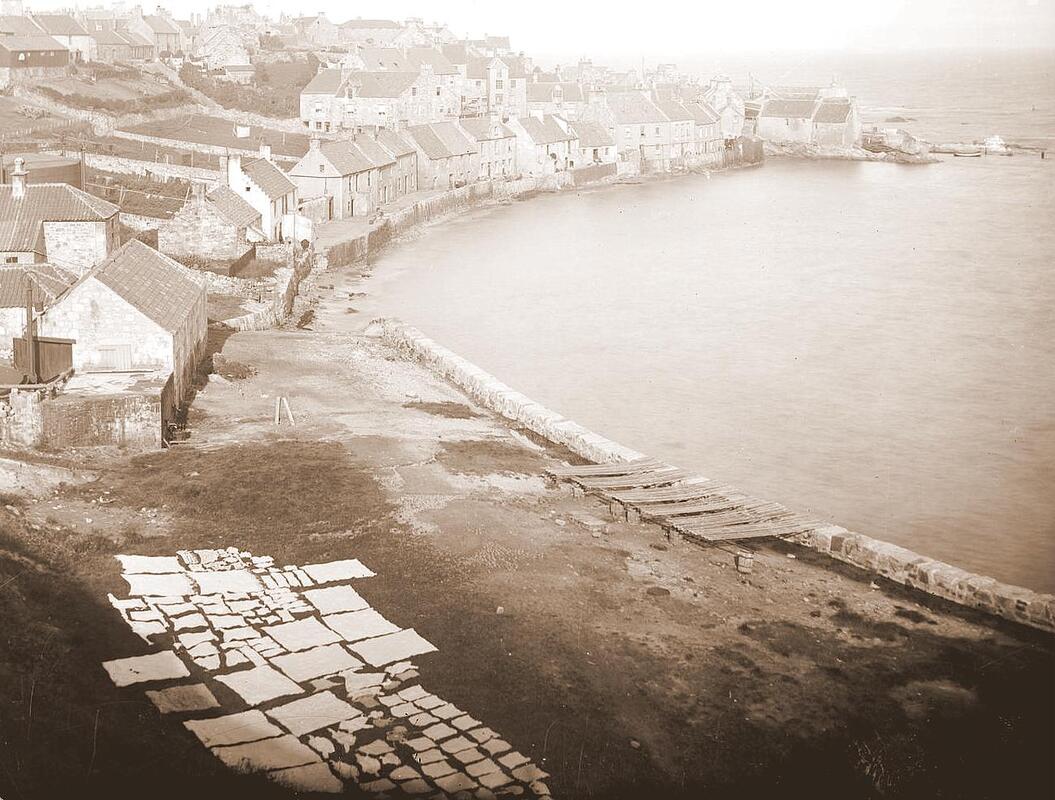
 RSS Feed
RSS Feed
